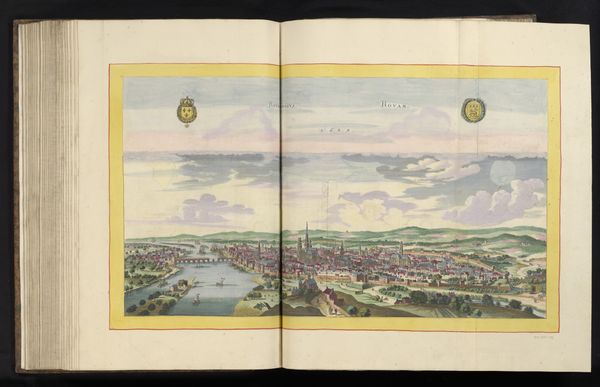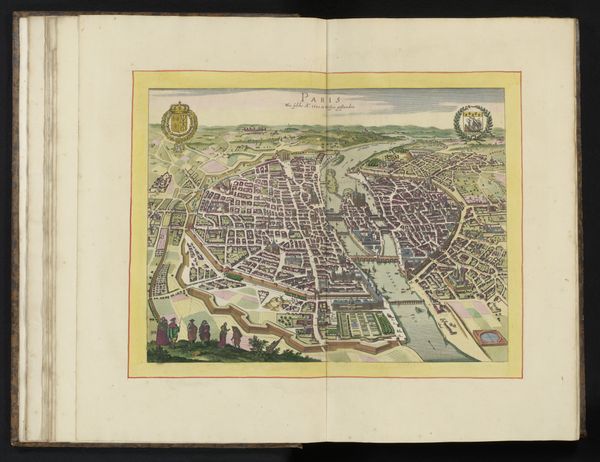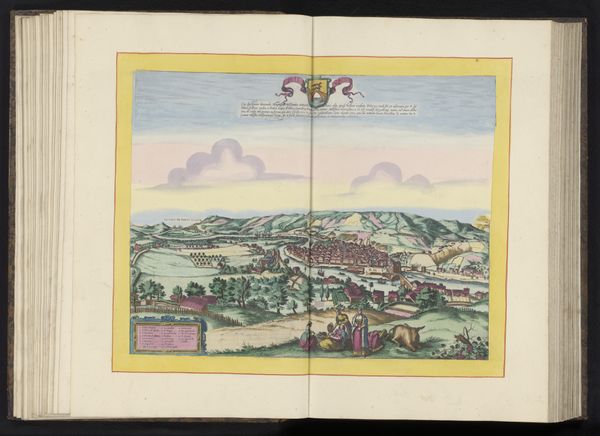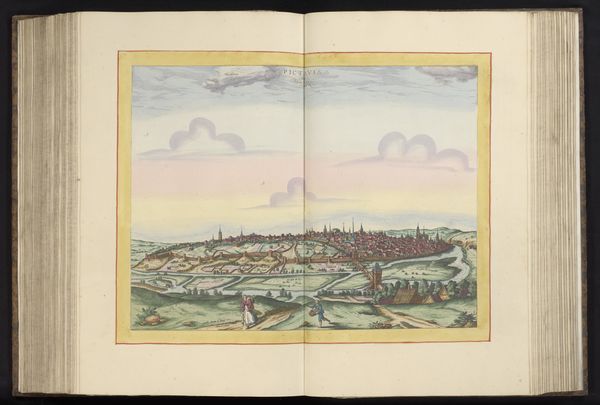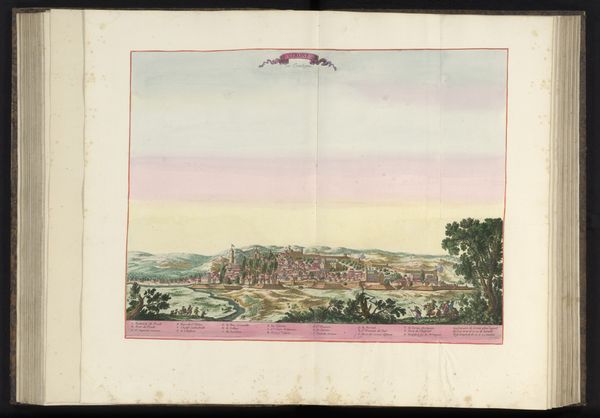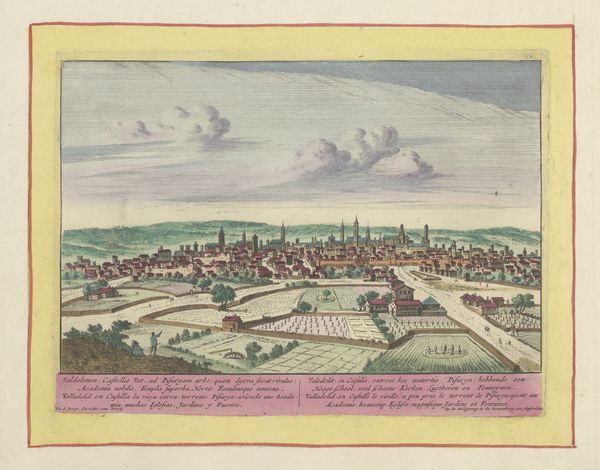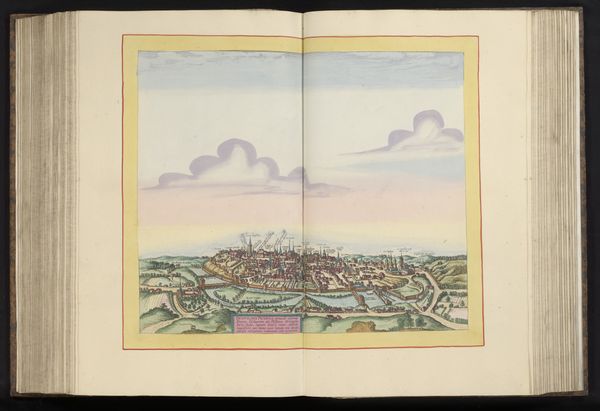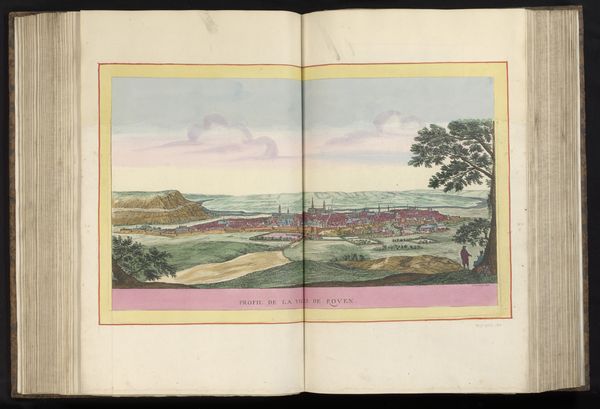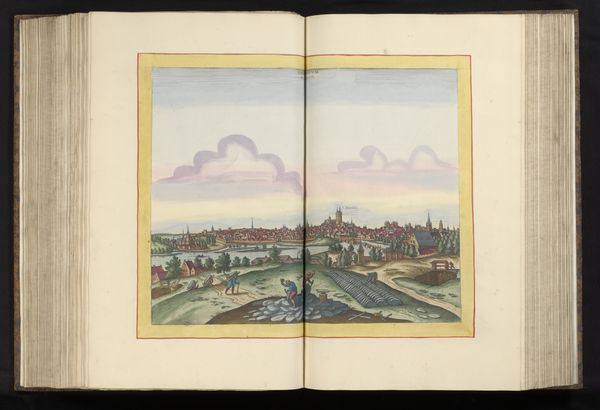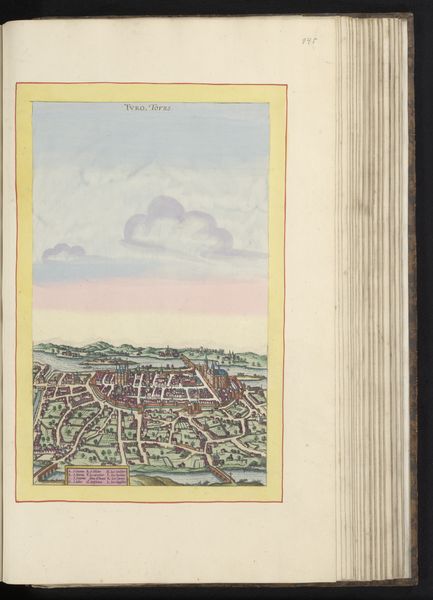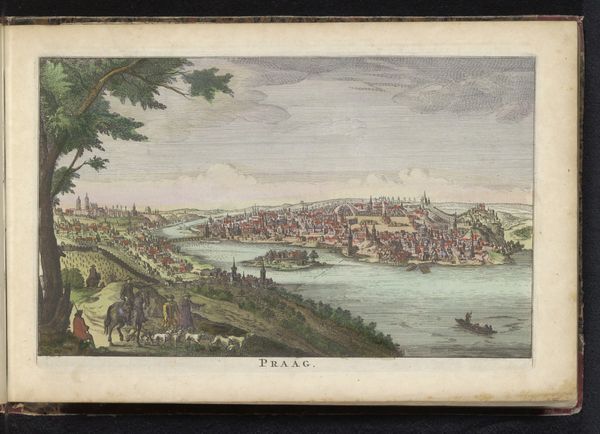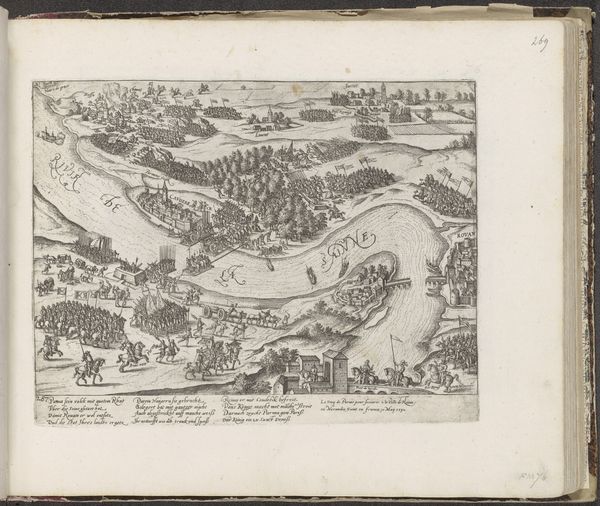
print, paper, engraving
#
baroque
# print
#
paper
#
cityscape
#
engraving
Dimensions: height 377 mm, width 680 mm, height 534 mm, width 860 mm
Copyright: Rijks Museum: Open Domain
Editor: This print, "View of the City of Paris," created in 1655 by Matthäus Merian the Younger, offers such an intricate rendering. It's fascinating to observe how Merian depicts the city as a bustling hub, using engraving on paper. What strikes me is the panoramic perspective, almost like a bird's-eye view, offering this all-encompassing view of 17th-century Paris. What stands out to you in this work? Curator: I find it compelling to consider the social context of this print's production. Engravings like this were crucial for disseminating information and shaping perceptions of cities. Who was this image intended for? And how does the printmaking process itself – the labour, the workshops, the distribution networks – shape our understanding of Paris at the time? This wasn’t just art; it was a commodity circulating within a specific economic and social structure. The paper itself, its quality and availability, speaks volumes about consumption habits. Editor: So, the print served almost like a form of mass media at the time? How might that have influenced people's view of the city, especially those who never visited Paris? Curator: Precisely! The image becomes a representation mediated by the artist, the publisher, and the techniques available. Notice how the details are emphasized – probably at the expense of a real fidelity. This wasn’t about accuracy; it was about constructing a certain *idea* of Paris. We should also consider who had access to these prints. Wealthy elites? Merchants? Examining the materiality of the object leads us to these crucial questions about production, access, and consumption. Editor: That’s a very interesting point –thinking about this image less as a "view" and more as a crafted product for consumption! Thanks, that gives me so much to consider. Curator: Likewise, it highlights the importance of looking beyond the immediate subject to understand the processes that gave it form and meaning.
Comments
No comments
Be the first to comment and join the conversation on the ultimate creative platform.
